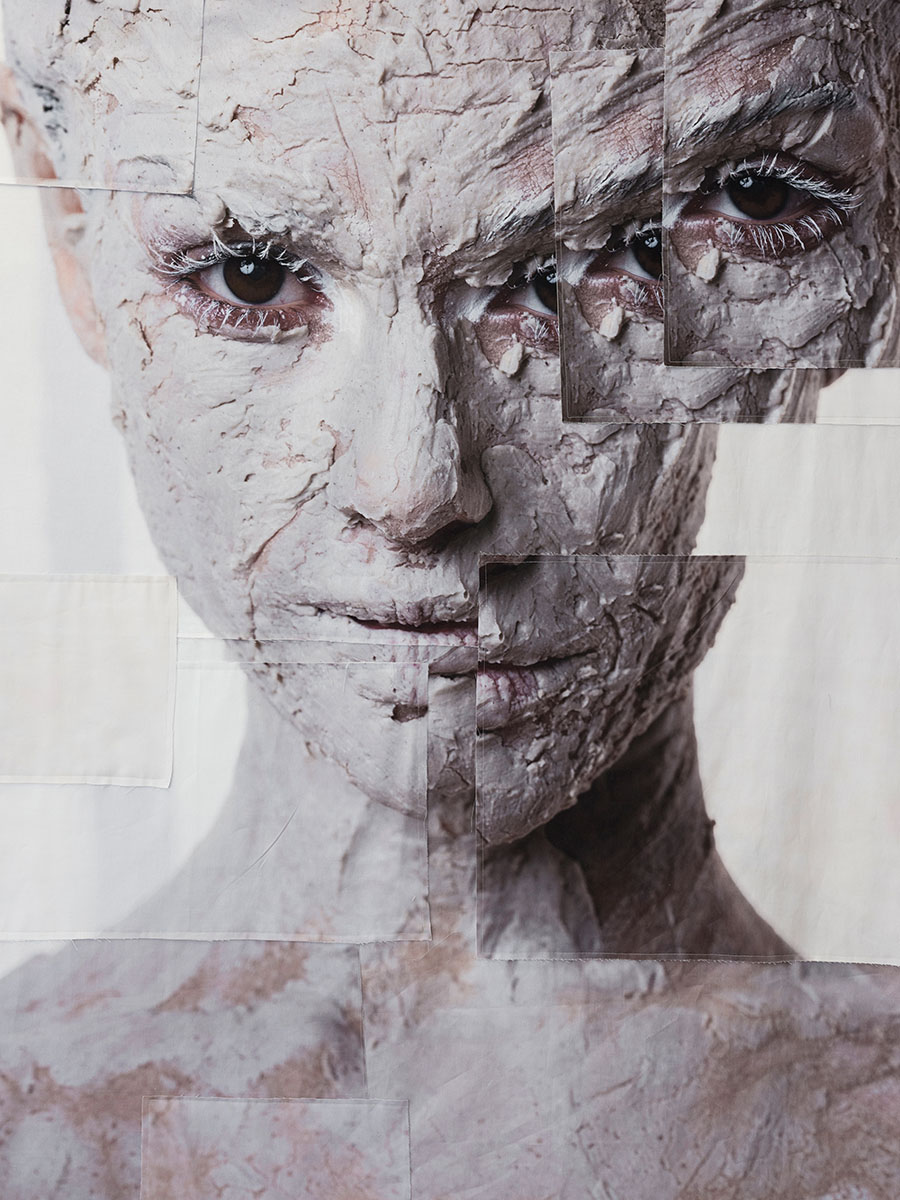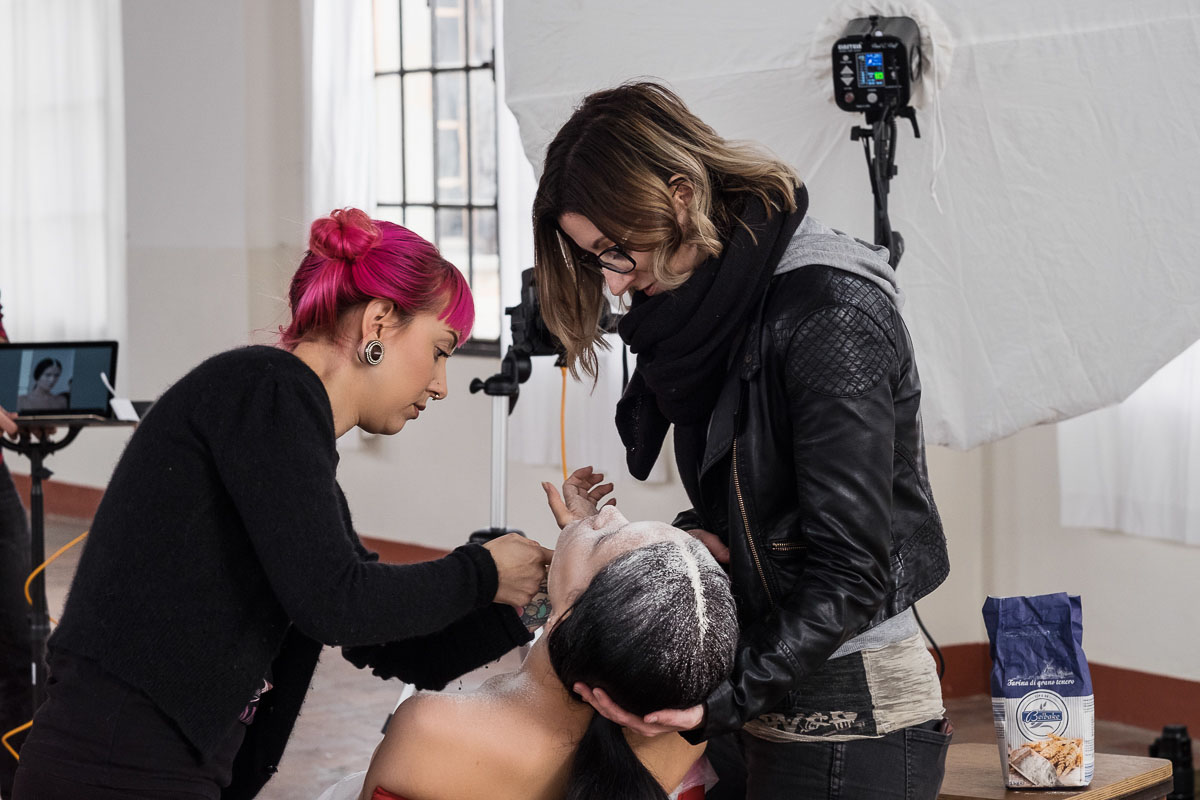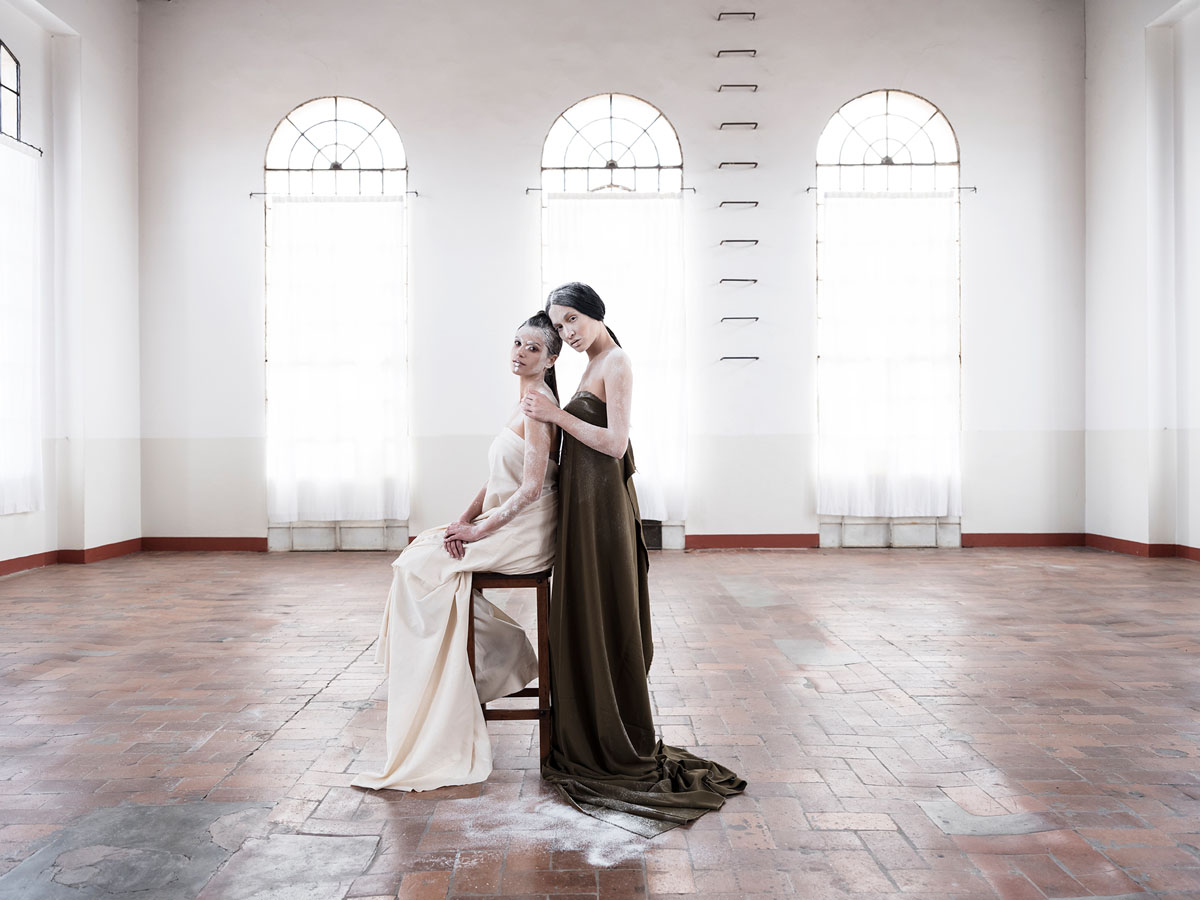
Impressions of FUJIFILM GFX 50S by Sara Lando
Sara Lando
Vivo e lavoro a Bassano del Grappa, e divido il mio tempo tra il ritratto commerciale, la fotografia autoriale e l’insegnamento.
Una grossa parte del mio lavoro personale esplora l’identità, i confini tra ciò che è reale e ciò che è immaginato e il modo in cui la memoria si deteriora e si rimodella con il passare del tempo.
Sono interessata ai momenti in cui il rapporto tradizionale tra quello che siamo e il mondo che ci circonda si disfa e viene sostituito da una nuova definizione di quello che siamo o che potremmo essere.
Il mio lavoro consiste nell’uso di tecniche miste e comprende la fotografia, l’illustrazione, il collage ed elementi tridimensionali e materici. Le tecniche che utilizzo derivano da una curiosità giocosa e dall’interazione diretta con l’oggetto piuttosto che da tecniche digitali
Mi affascina la frammentazione e la degradazione dell’immagine e il concetto di creazione come conseguenza della distruzione fisica di un oggetto.
Come membro del Direttivo dell’Associazione Italiana Fotografi Professionisti Tau Visual mi interessa promuovere l’accessibilità e la diversità nel campo della fotografia, con una speciale attenzione al consenso informato e alla responsabilità che il fotografo ha nei confronti dei propri soggetti.
The first time I was able to see and touch the GFX 50 was in Dubai, during the GPP Photo Week: Zack Arias was putting the finishing touches to his presentation and he was zooming in on pictures for what it looked like forever. I was particularly interested in how small and light the camera looked compared to other medium format cameras I was used to: I’m a small person with osteoarthritis, and camera size and weight is starting to be an issue that matters quite a lot, to me. But other than playing with it for a few minutes and being jealous of Zack, there wasn’t much I could do with the camera then.
Fast forward a couple of months and I got to get my grabby hands on a preproduction model of the GFX for a while, to shoot some photos and a behind the scene video. The first day I got the camera I was planning on reading the manual, because I’m that kind of person: I know photographers seem to be attracted to new gear like moths to a flame, but I honestly hate using a new camera, re-learning where everything is, ironing out the kinks. It’s like having to buy a new pair of running shoes: you might have read great reviews, you might like the features on paper, but you don’t know if the new ones are going to give you blisters and you have to break them in if you don’t want to get injured. With new cameras everything needs to be re-learned before it becomes flawless and when I shoot I want to think about the subject rather than the gear.
Then I realized that the GFX was designed with the same set of rules in mind that had been used for the whole X Series, and everything felt familiar, so I decided to test it right away and work with it and see how it would fit into my workflow. The menu is completely customizable, which means you can really personalize your camera to your own specific needs: time and time again I found that things I might have issues with would be easily solved adjusting something in the menu. The learning curve was basically non existent. We shot at Filanda Motta, a repurposed mill that was built in the mid-nineteenth century in the countryside between Treviso and Venice. I wanted to test the camera using both natural light and artificial light and I wanted a place where I could make a bit of a mess without having to worry too much about it. I also would rather shoot in a place than in a studio: even when I am shooting a close up, I feel that working on location tends to be less “aseptic” and I can (and have) turned nearly anywhere into a studio, if I bring lights and a camera.
I sent my whole team the moodboards for what I had in mind and we discussed different possibilities. I like collaborating with people and even though at the end of the day it’s my vision and my responsibility on the line, the only way to make it work for me is if the vision becomes shared and everyone contributes at the best of their abilities. The secret to good pictures, even before you get decent gear, is to always be surrounded by people who are more clever than you are. I wanted the textures to feel natural rather than “makeuppy” (yeah, that’s a word now. You are welcome) and Chiara mostly used clay or flour to achieve the look I wanted.
Since I knew that the big sensor would capture a lot of detail, I wanted to have a lot of detail worth capturing and I must confess most of my camera’s battery life was spent in the very little useful task of zooming in and out of images, over and over. I know proper photographers don’t do it: they just know they have the shot and keep working, but if you ask me, they are missing out.
We kept the lighting to a minimum: the only reason I even used artificial lights is because we ended up working on a cloudy day and I wanted to shoot at ISO 100 rather than 800 for most of the images, even though I decided to test the camera using natural light as well, and was blown away by how good it performed for a medium format.
I started shooting tethered, but I quickly realized that it was pretty easy and reliable to just check the image on the touch screen by zooming in and out, which freed me from having to move more stuff as I progressed during the day. I particularly liked the focus assist highlighter, which shows the area that is in focus on the display, and having the display swivel, allowed me to shoot without having to cover my face with the camera: when directing a subject I’d rather look at them directly and have them see my face rather than a camera.
On the other hand I also wanted to test the digital viewfinder, which didn’t lag at all and allowed me to work flawlessly even in situations where good timing was critical (full disclosure: we also had a lot of leftover flour, so we decided to have some fun with it)
One of the things I was really impressed with is how good the jpeg straight out of camera really is. There is one thing Fujifilm does incredibly well, and that’s film simulation: if I could have a classic chrome filter implanted in my eyes, I probably would.
To me, the work isn’t done when the file is captured: the final product is always a physical object and working with medium format meant that I could really count on all those details I had stored in the file and translate them into the fabric on which I had the photo printed.
There’s a different conversation that happens with the image itself when you get to interact with it using your hands and to me it’s always a matter of exploration, a playful process that is only partially driven by design and welcomes serendipity.
And again, using the GFX to photograph the finished pieces meant that I could count on a file that would represent an object that’s a couple of meters tall while retaining all of the detail of the stitches, or the wrap of the fabric.
About Thráfsma
“Everything flows and nothing abides, everything gives way and nothing stays fixed.” – Heraclitus
I often wonder what makes me recognize images of me as “myself”. A photograph is a bidimensional representation of a very narrow slice of time, taken from a single point of view, yet I don’t seem to have a problem with saying “this is me”, when I see one.
My work aims to explore identity, the boundaries between what’s real and what’s imagined and the way memory changes shapes over time.
I am interested in those moments where the traditional relationship between the self and the world around it becomes undone and is replaced with a new definition of who we actually are, or might be.
I consider myself a mixed-media artist and my techniques include photography, illustration, collage and sculptural elements. The techniques utilized in my work are derived from a playful curiosity and a direct interaction with the object rather than a virtual modification of the image.
I’m fascinated with the fragmentation and degradation of the image and the concept of creating through physical destruction.

























































